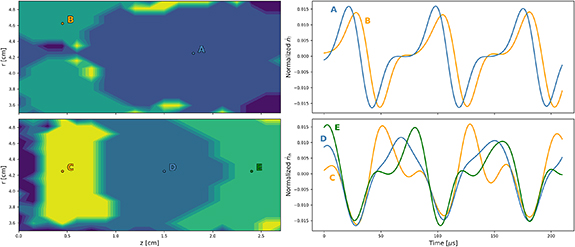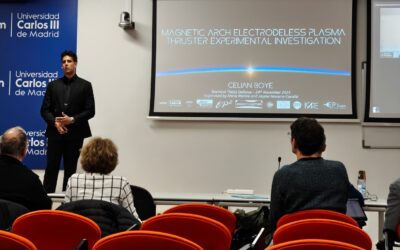We are pleased to announce the publication of our new article “Data-driven sparse modeling of oscillations in plasma space propulsion” in the context of ZARATHUSTRA, published with Open Access.
In this work, we present a novel algorithm to obtain data-driven models of oscillatory phenomena in plasma space propulsion systems, based on sparse regression (SINDy) and Pareto front analysis. The algorithm can incorporate physical constraints, use data bootstrapping for additional robustness, and fine-tuning to different metrics. Standard, weak and integral SINDy formulations are discussed and compared. The scheme is benchmarked for the case of breathing-mode oscillations in Hall effect thrusters, using particle-in-cell/fluid simulation data. Models of varying complexity are obtained for the average plasma properties, and shown to have a clear physical interpretability and agreement with existing 0D models in the literature. Lastly, the algorithm applied is also shown to enable the identification of physical subdomains with qualitatively different plasma dynamics, providing valuable information for more advanced modeling approaches.
Congratulations to our team members Borja Buján and Mario Merino for this work. We especially would like to thank Stefano Discetti from the Experimetal Aerodynamics and Propulsion Lab from Universidad Carlos III de Madrid for the valuable preliminary discussions that we had with him.
You can read the paper here. The data that support the findings of this study are also openly available on Zenodo



